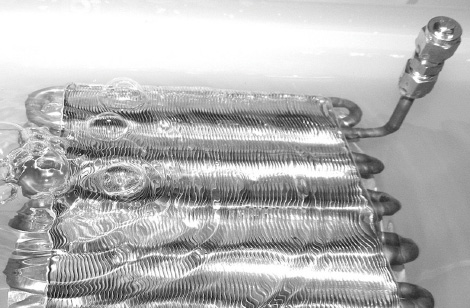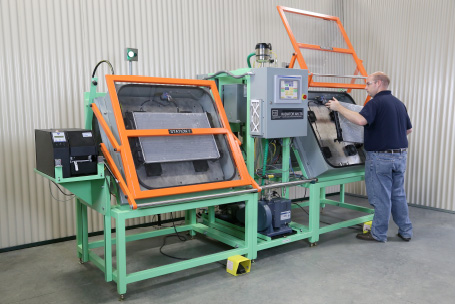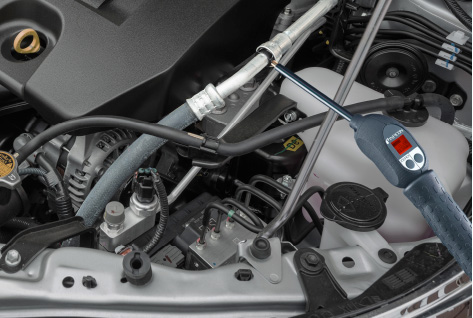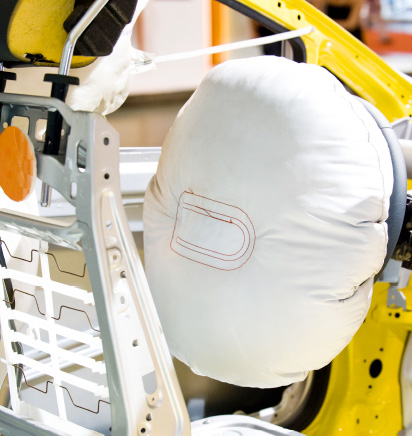7 Tips to Cope with Increasing Leak Testing Requirements in Automotive Production
Leak tightness requirements in the automotive industry are continuously rising as suppliers and automobile manufacturers put more effort into quality assurance. Leak-tightness requirements are intensifying for many components such as common rail injection systems, air-conditioning systems using R1234yf or CO2 as refrigerants, and safety-related airbag inflators. In addition, production quantities for some components which always have to be leak tested are dramatically increasing, for example, heat exchangers for exhaust gas recirculation systems (to reduce nitrogen oxide) or heat exchangers for the steadily growing number of downsized engines with turbochargers. The following tips will help automobile manufacturers and suppliers to better meet increased leak testing requirements.
1. Counting bubbles is a thing of the past
 The oldest leak testing procedure is probably the water bath, also known as the bubble test. The biggest challenge with this method is that the outcome depends on the condition of the human testers, who must watch for the rising bubbles and count them. Secondly, many parts to be tested either do not tolerate any water or they must be dried in a time-consuming process after testing. Lastly, some test parts have such a complex geometry that bubbles may emerge, but they may get caught in the radiator’s fine rib structure, for example, and do not rise.
The oldest leak testing procedure is probably the water bath, also known as the bubble test. The biggest challenge with this method is that the outcome depends on the condition of the human testers, who must watch for the rising bubbles and count them. Secondly, many parts to be tested either do not tolerate any water or they must be dried in a time-consuming process after testing. Lastly, some test parts have such a complex geometry that bubbles may emerge, but they may get caught in the radiator’s fine rib structure, for example, and do not rise.
Tip: Replace antiquated water baths with modern test gas methods – since a charge air intercooler is clearly not a bicycle tube.
2. Pressure decay testing is often unreliable
In pressure decay testing, a test part is filled with compressed air and one measures how quickly the pressure decreases over a certain time interval. However, this procedure is not at all suited for deformable plastic parts. In addition, as the temperature changes, so does the pressure, which presents a problem for the procedure. If the temperature increases during the test, leaks remain undetected; if the temperature drops, the pressure decay test will detect phantom leaks. Changes of less than 0.1° C are already sufficient to cause measurement results to deviate by a factor of 100. Modern test gas methods thus clearly have an advantage over older procedures.
Tip: Choose tracer gas leak testing over pressure decay testing for any flexible parts or parts that are designed to change temperatures.
3. Accumulation chambers reduce costs

Photo: Courtesy of VTI (Vacuum Technology Inc.)
Sometimes, complex testing in a helium vacuum chamber is too excessive. A test in a simple and cost-efficient accumulation chamber is well suited for small and medium-sized parts that need to be tested only for possible oil or water leaks. In accumulation testing, helium test gas emerging from an oil, water or charge air cooler is collected in the accumulation chamber over a defined time interval and the leak rate is determined from the increase in concentration. Leakage rates of up to 1∙10-4 mbar∙l/s can be detected under production conditions allowing to test for water (10-2 mbar∙l/s) and oil (10-3 mbar∙l/s) leaks.
Tip: Check out an accumulation solution if you need to test for oil or water leaks!
4. Emissions control and decreased fuel consumption require test gas methods
Due to stronger regulatory and legislative requirements pertaining to emissions control, fuel tanks and lines are now often tested for leakage rates of 10-4 to 10-6 mbar∙l/s using test gas methods. Injection valves and fuel pumps can be tested for leakage rates of 10-4 to 10-5 mbar∙l/s using helium in the accumulation chamber. However, modern common rail injection systems have even higher leak-tightness requirements of up to 10-6 mbar∙l/s due to their very high operating pressures (up to 3,000 bar). In this case, testing in a vacuum chamber is appropriate. Helium emerging from the test part into the chamber’s vacuum is detected by a helium leak detector connected directly to the vacuum chamber. The benefits of vacuum testing are high accuracy (in ideal situations up to 10-12 mbar∙l/s) and very short cycle times for line production processes.
Tip: Testing for fuel leaks can be done in a vacuum chamber very efficiently and with high reliability.
5. Vacuum testing for modern air-conditioning systems
Alternative, climate-friendly refrigerants, such as R1234yf and CO2, are currently replacing climate-damaging R134a. At the same time, the old rule of thumb of a maximum of 5 g R134a may be discharged per year and joint (which corresponded to a helium leakage rate of 4∙10-5 mbar∙l/s) is definitively obsolete. R1234yf is highly flammable and CO2 systems operate at a pressure of up to 120 bar. Therefore, whether evaporators, condensers, or filler valves are involved, the new refrigerants have higher leak-tightness requirements which can only be met by a helium test in a vacuum chamber.
Tip: Make sure the components for a modern air conditioning system are tested properly in a helium vacuum chamber before going into final assembly.
6. Measuring refrigerant leaks directly
 Suppliers obviously test the leak-tightness of their air-conditioning system components. However, after installing the air-conditioning system, car manufacturers themselves must test the leak-tightness of the three to six connections they may have installed and closed for the first time. Sniffer leak detectors are well suited for this task. Their test sensor is passed over the connection joint either manually or by means of a robot. Modern sniffer leak detectors no longer require helium or forming gas (a mixture of 5% hydrogen and 95% nitrogen) for this task; in fact, they can directly detect escaping refrigerants, whether they are R134a, R1234yf or CO2.
Suppliers obviously test the leak-tightness of their air-conditioning system components. However, after installing the air-conditioning system, car manufacturers themselves must test the leak-tightness of the three to six connections they may have installed and closed for the first time. Sniffer leak detectors are well suited for this task. Their test sensor is passed over the connection joint either manually or by means of a robot. Modern sniffer leak detectors no longer require helium or forming gas (a mixture of 5% hydrogen and 95% nitrogen) for this task; in fact, they can directly detect escaping refrigerants, whether they are R134a, R1234yf or CO2.
Tip: Check out INFICON’s broad portfolio of sniffer leak detectors for the final fill medium.
7. Bombing for safer airbags
 In years past, the introduction of moisture into pyrotechnic inflators resulted in millions of vehicles being recalled. To avoid this problem, suppliers should check their inflators in a vacuum chamber for leakage rates of 10-6 mbar∙l/s by means of a special test gas method referred to as bombing. Initially, an airbag igniter is exposed to a helium overpressure so that the test gas can penetrate inside the igniter via any leaks. Subsequently, the helium escaping again out of the test part is detected in a vacuum chamber test. Cold gas inflators that contain a compressed helium-argon mixture do not have to be subjected to the bombing. In this case, they can be tested directly in the vacuum chamber for helium escaping from any leaks.
In years past, the introduction of moisture into pyrotechnic inflators resulted in millions of vehicles being recalled. To avoid this problem, suppliers should check their inflators in a vacuum chamber for leakage rates of 10-6 mbar∙l/s by means of a special test gas method referred to as bombing. Initially, an airbag igniter is exposed to a helium overpressure so that the test gas can penetrate inside the igniter via any leaks. Subsequently, the helium escaping again out of the test part is detected in a vacuum chamber test. Cold gas inflators that contain a compressed helium-argon mixture do not have to be subjected to the bombing. In this case, they can be tested directly in the vacuum chamber for helium escaping from any leaks.
Tip: Airbags should be properly tested in a helium vacuum chamber to avoid any safety risks.
For more information about how to get the most out of your leak testing system, download our extensive industry guide entitled "Leak Testing in the Automotive Industry,” free of charge at http://www.inficon.com/automotiveindustry-ebook